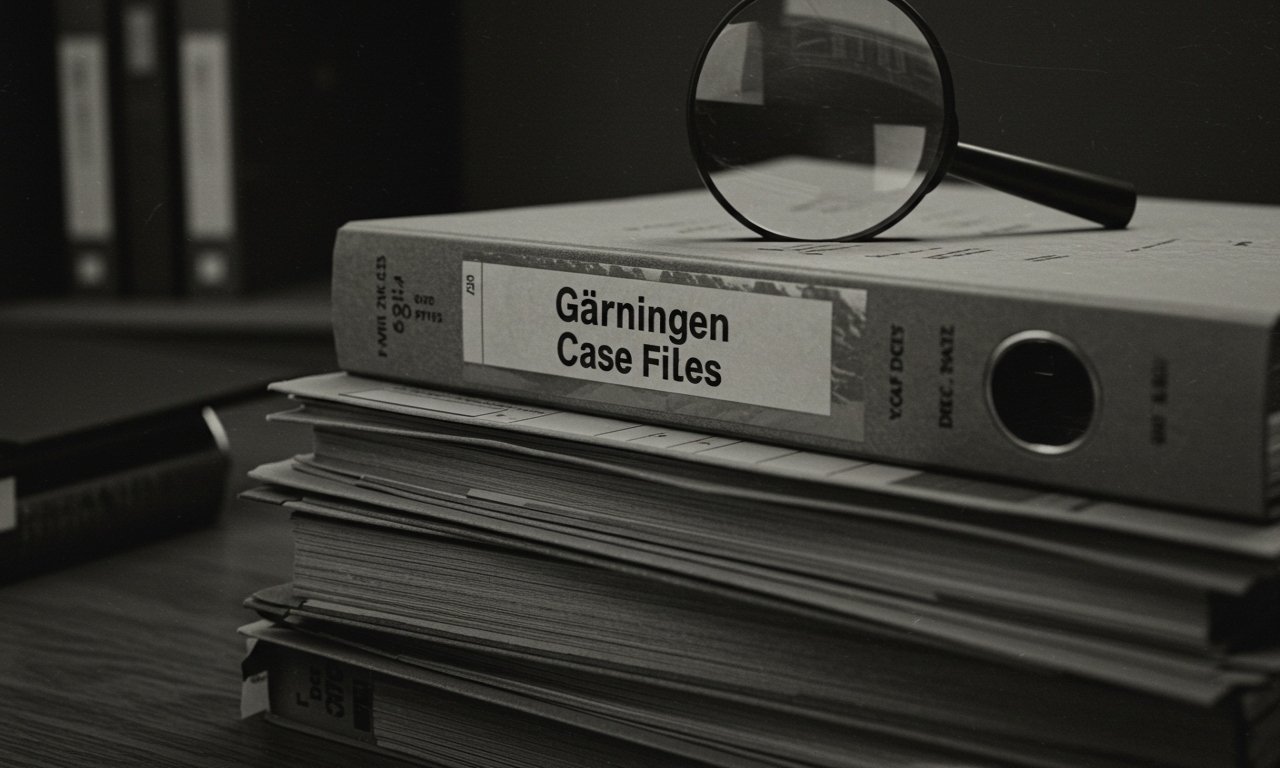Every case leaves behind traces, documents, and unanswered questions. Yet, some cases are so layered that they capture public attention for years. The Gärningen case files belong to this category, offering investigators, historians, and analysts a treasure trove of information. These files reveal not only the facts of the deed but also the intent, the surrounding circumstances, and the broader social context.
This article takes readers on a journey through the discovery, analysis, and significance of the files. From the evidence itself to the lessons investigators learned, we will break down what truly makes the Gärningen case files unique.
The Discovery of the Files
The files came to light during a larger inquiry into a series of questionable actions that had been debated in both public and legal arenas. When they were opened, they exposed not only a detailed record of the deed but also correspondence, witness testimonies, and procedural notes that painted a complete picture of the circumstances.
You Might Also Like: Sinpcity
Unlike ordinary archives, the Gärningen case files were meticulously compiled. Each page revealed something more—details that might seem minor alone but, together, pointed toward larger truths.
Why Gärningen Became a Landmark Case
The case stood out because it was more than just a single act; it represented a moment when law, morality, and society collided. The files showed that it was not simply about what happened, but about how it was perceived and judged by the community.
For legal scholars, the case became a reference point in discussions about responsibility and accountability. For historians, it became a window into cultural norms of the time.
The Role of Investigators
The team behind the investigation played a crucial role. They were not only tasked with analyzing evidence but also interpreting context. In many instances, they had to ask: Was this deed intentional or accidental? Was it premeditated, or was it a reaction to circumstances?
Their reports reflected a deep dive into motive and consequence. Without their insights, the files would have been just papers; instead, they became a living story.
Key Evidence Inside the Gärningen Case Files
Among the most significant pieces of evidence were:
- Eyewitness accounts – often conflicting, yet revealing societal tensions.
- Material proof – objects linked directly to the deed.
- Written confessions and denials – showing the struggle of guilt and justification.
- Official correspondence – how authorities debated the correct course of action.
Together, these pieces formed the backbone of the investigative narrative.
Patterns Investigators Noticed
Investigators observed recurring themes in the files:
- Actions taken under pressure often led to unintended outcomes.
- Witnesses remembered events differently, depending on their personal stakes.
- The community’s response shaped how the deed was recorded.
These patterns showed that Gärningen was not isolated—it was influenced by wider forces.
Contradictions in the Testimonies
One of the most intriguing aspects of the files was the contradictions. Some witnesses swore that events unfolded one way, while others offered completely different timelines. This forced investigators to weigh credibility, motives, and biases carefully.
Such contradictions highlight how fragile truth can be in human memory and how crucial investigative methods are in pinning down reality.
The Legal Implications of Gärningen
In courtrooms, the files served as a foundation for legal arguments. Prosecutors leaned heavily on physical evidence, while defense teams highlighted inconsistencies in witness statements.
Ultimately, the legal discourse around Gärningen shaped future rulings. Courts began placing greater emphasis on documented evidence rather than oral testimony alone.
Public Reaction to the Case
When the files were first revealed, they sparked heated public debate. Newspapers published excerpts, and commentators argued over whether the deed was justifiable. This public discourse showed how cases extend beyond legal systems—they become part of cultural consciousness.
The public reaction also pressured authorities to ensure transparency, making this case a turning point for public trust.
Lessons for Modern Investigations
Today’s investigators often look back at the Gärningen case files for guidance. The thoroughness of the documentation provides a benchmark for modern standards.
Lessons include:
- Always corroborate testimonies with hard evidence.
- Understand the social backdrop behind a deed.
- Record findings in a transparent and accessible manner.
The Symbolic Weight of Gärningen
Beyond law and order, the word itself carries symbolic weight. In this case, it stood for more than a single act—it became shorthand for moral responsibility, justice, and memory.
The files preserved not just facts but also the cultural meaning of the deed, ensuring its place in history.
Comparison to Other Historical Cases
When compared to other legal cases of its time, Gärningen stood apart because of the depth of documentation. Few cases were recorded with such precision, making it a unique example for future generations.
By comparing it with parallel cases, scholars can see how legal thought and cultural values evolved.
The Cultural Legacy of the Files
The case inspired literature, plays, and even philosophical essays. Writers used Gärningen as a metaphor for human choice and consequence. This cultural afterlife shows how an act, once documented, can echo through art and ideas long after the facts are settled.
Modern-Day Relevance
Though decades may have passed, the files remain relevant. They remind us of the importance of justice systems built on evidence, not rumors. They also show the need to view deeds in context rather than isolation.
For modern society, Gärningen is more than history—it is a lesson in accountability and truth-seeking.
Conclusion
The Gärningen case files are more than documents. They are a mirror reflecting justice, morality, and society’s struggle to understand human action. Investigators did not just find facts; they uncovered meaning. That is why the case remains significant today.
By studying the files, we are reminded that every deed carries weight. And while facts may fade, records preserve the truth for generations to learn from.
FAQs
What does Gärningen mean in the case files?
It refers to the act or deed at the center of the investigation, carrying both legal and moral implications.
Why were the Gärningen case files important?
They offered a comprehensive view of evidence, testimonies, and societal reactions, shaping both legal and cultural history.
Did investigators agree on the outcome?
Not always. Contradictions in testimonies led to debates, but documented evidence helped ground conclusions.
How did the public react to the files?
With intense interest and debate, often shaping public opinion about justice and fairness.
Are the Gärningen case files still studied today?
Yes, they are used as benchmarks in both legal studies and cultural analysis.
What lessons can modern investigators learn from them?
The importance of documentation, cross-checking evidence, and considering social context alongside legal facts.

